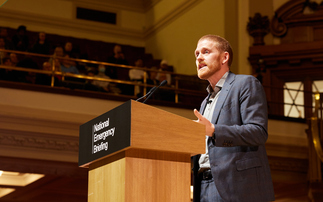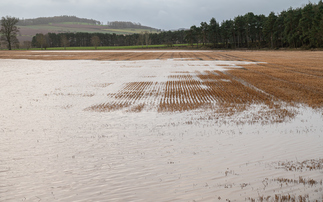High-integrity carbon markets can play a starring role in driving financial flows away from fossil fuels and towards climate solutions, writes South Pole's Renat Heuberger
Despite everything we know about the climate emergency and its causes, capital still flows too easily towards hydrocarbon projects. Just look at these figures coming out of the COP27 Climate Summit, which highlight the impact of 2022's dash for gas. Everybody knows it's wrong to continue financing oil and gas like this, but the money still rolls in to develop these projects.
In this decade of critical action, the dash for gas is more than concerning - it's self-sabotage. Especially when few national climate goals have substantially enhanced since Glasgow, policy implementation is trailing, climate finance to protect natural carbon sinks remains woefully low, and deployment of low carbon technology is not happening fast enough.
Of course, the design and engineering for oil and gas is expensive, risky and difficult, but once they're up and running, these projects are cash machines. Nature-based climate solutions don't have this same ‘curb appeal' for prospective investors, but they could and should.
So, while national oil companies and supermajors dash for gas, the voluntary carbon market responds with a dash for cash, which can fund a response to this latest carbon budget blowout, rather than make it worse.
Investing in nature, biodiversity, communities, carbon negative technology, and more - made possible by the voluntary carbon market - has not had the same draw to investors, but the World Economic Forum has calculated that investment in nature alone could generate over $10tr by 2030.
While the voluntary carbon market is not perfect, it offers a measurable, scalable and growing benefits. Right now, the market is channelling major finance into projects that reduce the levels of greenhouse gases in our atmosphere. And it has the potential to help us reach net zero, so long as more businesses go above and beyond decarbonisation.
With a few supply and demand side enhancements, we can bring integrity to the voluntary carbon market and tip these financial scales firmly in nature's favour. Going into 2023, we need to see more standardisation, more transparency, and only the highest quality credits (additional, accurate, permanent, and with tangible benefits for biodiversity and local communities) entering the market.
The guard rails for each of these are on their way. Independent initiatives like the Integrity Council for the Voluntary Carbon Market and the Voluntary Carbon Market Integrity Initiative are bringing forth or enforcing new standards for both ends of the market. International bodies like International Organisation of Securities Commissions (IOSCO) are questioning how regulators can step up, private initiatives are streamlining this fragmented market with data and systems, and governments are wising up to how they can deliver higher returns from protecting their nature, rather than selling it.
This is not meant to excuse the voluntary carbon market's flaws, but the urgency of action required means we must build the plane while flying it. These are the licks of paint the market needs to start drawing down the cash it should.
And the concept of crediting systems to channel carbon finance towards emission reductions activities outside organisational or government boundaries is holding: like President Biden, the atmosphere does not differentiate between Cambodia and Colombia.
With these measures soon in place, what we have left is a mechanism for connecting the better angels of free market economics with nature-based carbon projects. Let's leave the dash for gas in 2022 and make 2023 the year that cash made a difference on - and kept oil and gas in - the ground.
Renat Heuberger is CEO of South Pole.
South Pole were a partner of Net Zero Festival 2022.








